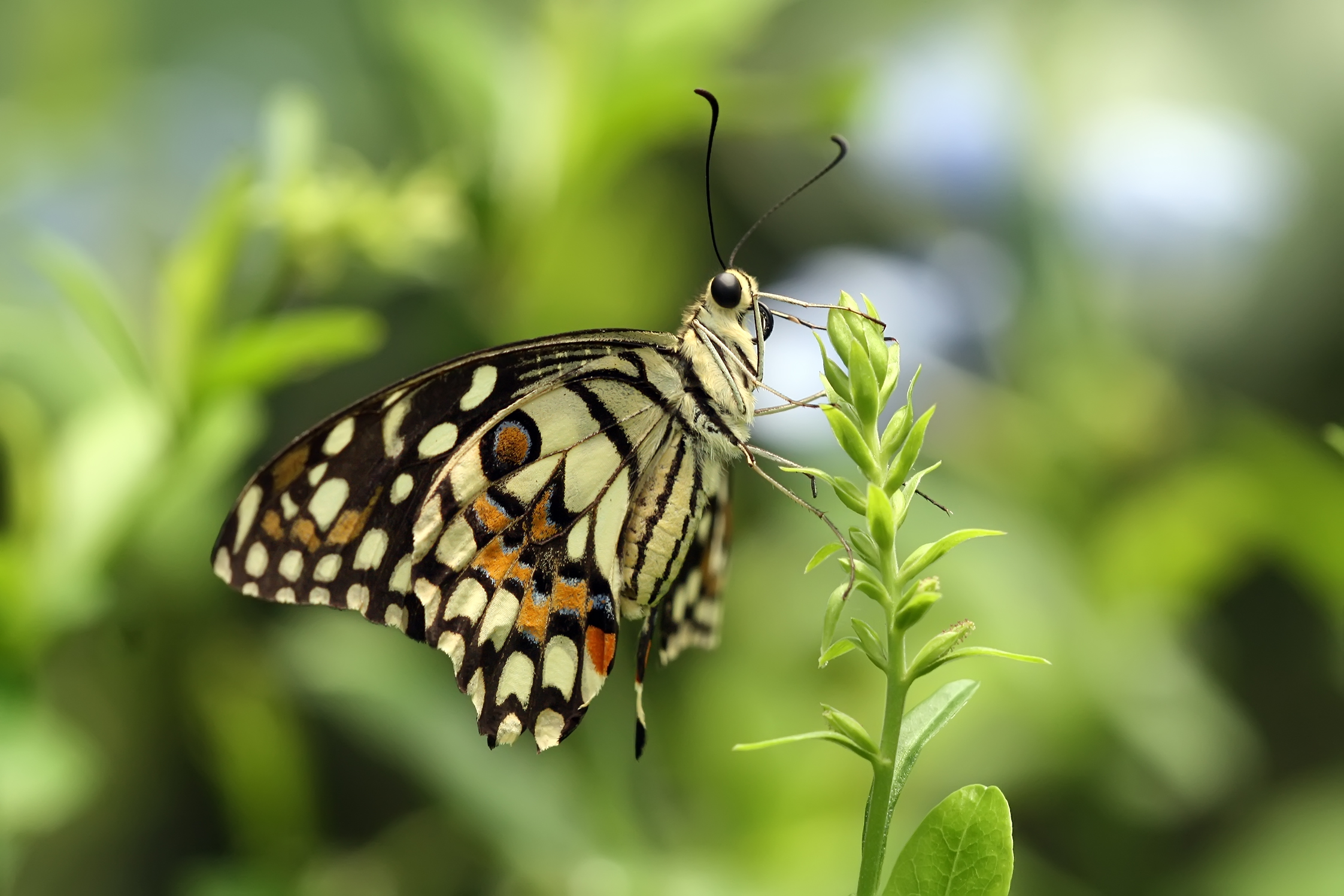Lime butterfly
(Papilio demoleus)

Description
Papilio demoleus, commonly known as the common lime butterfly or chequered swallowtail, is a species of swallowtail butterfly that belongs to the family Papilionidae. This butterfly is widely distributed throughout Asia, from India to Japan, and is also found in Australia, Africa, and the Middle East. In this article, we will explore the taxonomy, morphology, life cycle, habitat, and behavior of Papilio demoleus. Taxonomy The scientific name of the common lime butterfly, Papilio demoleus, was first described by Carl Linnaeus in 1758 in his book Systema Naturae. The genus name Papilio is derived from the Latin word for "butterfly," while the species name demoleus is derived from the Greek mythological character Demoleus. Morphology The common lime butterfly is a medium-sized butterfly with a wingspan of 8-10 cm. It has a striking appearance with its black and yellow wings, which are decorated with a pattern of black spots and stripes. The wings have a distinct "tail" at the end of each hindwing, which gives the butterfly its swallowtail appearance. The male and female common lime butterfly can be distinguished by their markings. The male has a black spot on its upper wings, while the female has a larger spot that extends into a band. The female also has a more extensive yellow band on its upper wings than the male. Life Cycle The common lime butterfly undergoes complete metamorphosis, which consists of four stages: egg, larva, pupa, and adult. The female butterfly lays its eggs on the leaves of host plants, which include citrus trees, rue, and other members of the Rutaceae family. The eggs are yellow and laid singly or in small clusters. The larvae hatch from the eggs after 4-5 days and start feeding on the leaves of the host plant. The larval stage of the common lime butterfly is known as a caterpillar. The caterpillar is green with white and black stripes and has two orange spots on the thorax. It has a distinct forked tail, which is thought to mimic a snake's head and serve as a defense against predators. The caterpillar feeds on the leaves of the host plant for about 2-3 weeks before pupating. The pupa of the common lime butterfly is green or brown and is attached to a branch or stem of the host plant. The pupal stage lasts for about 1-2 weeks before the adult butterfly emerges. The adult butterfly is active during the day and feeds on the nectar of flowers. The lifespan of the adult butterfly is about 2-3 weeks. Habitat The common lime butterfly is found in a wide range of habitats, including gardens, parks, forests, and agricultural areas. It is a highly adaptable species and can survive in both urban and rural environments. The butterfly is commonly found in Asia, but has also been introduced to other parts of the world, including Australia and Africa. Behavior The common lime butterfly is a highly mobile species and is known for its long-distance migrations. In some parts of Asia, the butterfly migrates annually in large numbers, traveling up to 1000 km to reach their breeding grounds. The butterfly is also known for its territorial behavior, with males defending their territory against other males. The common lime butterfly is a highly valued species in many cultures and is often used in art and literature. In some countries, the butterfly is considered a symbol of good luck or fortune. Conclusion Papilio demoleus, the common lime butterfly, is a fascinating species that is widely distributed throughout Asia and other parts of the world. Its distinctive appearance, life cycle, habitat, and behavior make it a popular species.
Taxonomic tree:







